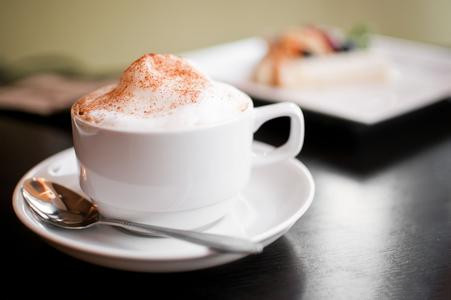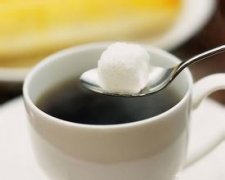Description of the baking process of boutique coffee beans

To put it simply, baking is the direct heating of the baking. Unlike cooking, you don't need oil, water, salt or sugar to bake. Just put the raw coffee beans in a heat-resistant container, then heat them on the fire, stir the coffee beans constantly while heating, so that each bean is heated evenly, and then stop heating when we reach the desired level. In fact, the whole process is a bit like barbecue, except that the roasted things are coffee beans.

The process of roasting coffee from raw beans to ripe beans is quite dramatic. without roasting, coffee will not have the aroma we know, nor will it bloom complex taste buds, and it will certainly not be as popular as it is now. Coffee beans smell like raw grass before they are roasted, and some dried raw beans even have a bad smell of fermentation! The process of roasting raw beans into ripe beans becomes "caramelization". In the process of caramelization, the sugars, fats, proteins and amino acids in coffee beans. Substances such as these begin to interact and combine, and the result is from more than 200 substances at the beginning to more than 800 substances in the end, such as the well-known aroma of coffee, which is similar to melanin after caramelization.
The first explosion: raw coffee beans generally contain about 10% moisture, which will be the first thing to run out of coffee beans when baking begins, so this stage is called dehydration at the beginning. As the temperature rises gradually, the gas and water inside the coffee bean will begin to put pressure on the cell wall because it is about to escape. When the pressure accumulates to 2025 atmospheric pressure, it will break through the cell wall, and then you will hear the sound of bursting. We call this stage the 'first explosion' and the temperature at this time is about 190 degrees Celsius. Because each baking is in batches, some beans will crack earlier; others will be later, so there must be sporadic popping at first, and then the sound will gradually dense. finally, it becomes sparse and even ends (it is recommended to record the time of start and end). At this time, the color of coffee beans is no longer the khaki at first, but a lighter brown color. Ordinary coffee beans are roasted at least to this extent before starting the pot. We call this roasting degree 'light roasting'.
The second explosion: the temperature at the end of the first explosion will be about 205 degrees, and then as the heating continues, the temperature continues to rise, the color of the coffee beans will gradually become darker, and the coffee beans will burst when the temperature reaches 230 degrees Celsius. This is the second explosion. The sound of the second explosion is small and the frequency is relatively high, which is different from the first explosion. At the same time, the film on the surface of the coffee bean will fall off, the color of the coffee bean entering the second explosion will be darker, and the surface will begin to shine.
Deep roasting: when the second explosion is over, the coffee beans become oily black and emit a lot of smoke, to which the temperature is usually not more than 240 degrees Celsius. If you want to do further deep roasting, you have to raise the temperature to more than 240 degrees. At this time, the surface of the coffee beans will become almost black and look very greasy. And this is probably the limit of the baking depth of coffee beans, and then bake them to ensure that the coffee beans will certainly burn and become authentic freshly roasted coffee beans.
Important Notice :
前街咖啡 FrontStreet Coffee has moved to new addredd:
FrontStreet Coffee Address: 315,Donghua East Road,GuangZhou
Tel:020 38364473
- Prev

Analysis on the treatment process of raw coffee beans: picking-berry treatment-drying
The coffee beans we are talking about are actually the seeds of a fruit similar to cherries. Coffee trees produce berries, called coffee berries, whose bright red color means they are ripe and ready to be picked. The fruit clustered on the branches. The outer skin (exocarp) of coffee berries is thick and bitter. However, the fruit (mesocarp) inside is very sweet and has the texture of grapes. And then there's parenchyma, which is like
- Next

The basic knowledge of coffee grinding and brewing.
When grinding beans, the size of the powder depends on the way it is cooked. Generally speaking, the shorter the cooking time, the finer the grinding powder; the longer the cooking time, the thicker the grinding powder. In the way of actual cooking, the ESPRESSO machine takes a very short time to make coffee, so the coffee powder is the finest, and the coffee powder is as fine as flour; coffee is boiled by siphon
Related
- Beginners will see the "Coffee pull flower" guide!
- What is the difference between ice blog purified milk and ordinary milk coffee?
- Why is the Philippines the largest producer of crops in Liberia?
- For coffee extraction, should the fine powder be retained?
- How does extracted espresso fill pressed powder? How much strength does it take to press the powder?
- How to make jasmine cold extract coffee? Is the jasmine + latte good?
- Will this little toy really make the coffee taste better? How does Lily Drip affect coffee extraction?
- Will the action of slapping the filter cup also affect coffee extraction?
- What's the difference between powder-to-water ratio and powder-to-liquid ratio?
- What is the Ethiopian local species? What does it have to do with Heirloom native species?

